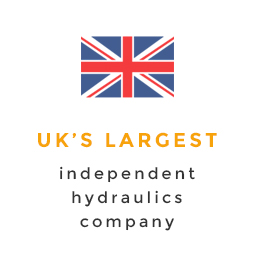The Beatles: Yellow Submarine
"In the town where I was born. Lived a man who sailed to sea. And he told us of his life. In the land of submarines."
The Beatles were going through their psychedelic phase in 1966 when they released their massive hit single, Yellow Submarine. The song was unusual because drummer Ringo Starr sang lead vocals, rather than Paul McCartney or John Lennon. It reached number one across Europe and went gold in the USA, selling one million copies.
It remained at number one in the UK for four weeks and was in the charts for 13 weeks in total - it was also number one in Austria, Belgium, Germany, Ireland, the Netherlands, Norway and Sweden.
Psychedelic phase
When the established song writing duo of Lennon and McCartney wrote Yellow Submarine, it was a new direction for the Beatles. The Fab Four had formed in Liverpool in 1960, with their music rooted in rock 'n' roll and beat.
As they evolved, they dabbled in other musical styles, such as pop ballads, psychedelia and rock, throughout the 1960s. Their psychedelic phase is generally believed to have started in 1965 with the single, Norwegian Wood.
<iframe width="100%" height="50%" src="https://www.youtube.com/embed/m2uTFF_3MaA" frameborder="0" allow="accelerometer; autoplay; encrypted-media; gyroscope; picture-in-picture" allowfullscreen></iframe>
By the time they released Yellow Submarine, their early, clean-cut, suited image had been replaced with the hippy garb of the day - brightly-coloured floral shirts, velvet jackets, garish trousers, paisley scarves and long hair.
They were enjoying phenomenal success as Beatlemania spread across the world - the phrase describing their success was coined in 1963, when they performed a series of live concerts across Britain and Europe, which attracted massive crowds of screaming fans.
It described their frenzied behaviour as they screamed, cried and fainted when they saw their heroes, mobbing them in the street and trying to clamber on to their vehicle as they drove away after gigs.
Hidden meaning
Yellow Submarine was the latest in a long line of hit records, but apart from Ringo singing lead vocals, it was unusual for another reason - the video. It was accompanied by an animated video showing cartoon versions of the band and the main character in the song, a man who "sailed to sea" and lived his life "in the land of submarines".
After its release, the world's press tried to analyse its supposedly "hidden meaning" and suggested many interpretations of the lyrics.
Peter Doggett, a respected music journalist, suggested it was a psychological test for "radical minds", inviting listeners to read what they wished into it. He described it as a "Rorschach test" - when people's perceptions of inkblots are recorded and analysed psychologically to ascertain their personality traits.
At an anti-Vietnam war protest in San Francisco in the US, protesters took a yellow model submarine through the crowd - an act described by Time magazine as being a symbol of the "psychedelic set's desire for escape".
Writing in Esquire, Robert Christgau suggested it was part of the Beatles' "anti-Vietnam war statement" that suggested American society was isolated and "morally irresponsible".
However, despite all the grand theories, McCartney refuted them and claimed Yellow Submarine was "a fun song - a children's song". He said it was a simple idea he had dreamed up while in bed going to sleep one night.
He tried to imagine what would be most fun for children and he thought going off for an adventure in a yellow submarine, with all your friends in a band, would be great. Originally, the song had a spoken intro, with Ringo introducing the children's story theme, but this was later discarded.
Film and album
Following the success of the single, which was included on their 1966 album, Revolver, the Beatles made an animated musical fantasy film called Yellow Submarine in 1968. They composed all the songs, inspired by the single, but expanding on the simple theme of the song and making it into a complete film script.
The action was set in Pepperland - a music-loving, happy community under the sea, protected by Sgt Pepper's Lonely Hearts Club Band. The famous Yellow Submarine rests on a hill and at the edge of Pepperland is a range of blue mountains.
The tranquillity and happiness are shattered when Pepperland is attacked by the Blue Meanies, who are a music-hating tribe who live at the other side of the blue mountains. They imprison the band, so an elderly sailor called Fred sets off in the Yellow Submarine to try and save them.
Made on a low budget of £250,000, the film was released on 17th July 1968 and is celebrating its 50th anniversary this month.
Six months later, the film's soundtrack was released as the Yellow Submarine album, with the addition of four new songs. It was number one in the album charts in Canada and Norway and went top five in the UK, Australia, the United States and West Germany.
To celebrate the film's 50th anniversary, it is being re-released in cinemas, with plans to have "bouncing ball" lyrics across the bottom of the screen, so that audiences can sing along, in the style of Sing-a-long-a Sound of Music.
Hydraulic power
There has been an increasing use of hydraulic power in the development of submarines from pre-war designs, with many improvements being made. One of the major changes is the wide variety of submarine devices operated by hydraulic power today.
Modern submarines rely on four different types of hydraulic power. A submarine is equipped with a conventional main hydraulic system and at least one hydraulic actuator outside the vessel's pressurised hull.
In early classes, before the days of hydraulic systems, the power was provided by air or electricity. As submarine design has constantly improved, the diversification and extension of hydraulic power has also increased at the same rate.
Hydraulic systems have many advantages, as they are lightweight, simple and reliable, requiring minimum maintenance. The controls are precise and sensitive, and because of the low inertia of moving parts, they will start and stop exactly when the operator chooses.
Self-lubricated, there's hardly any wear or corrosion. Their operation is unlikely to be interrupted by water or salt spray and they are relatively quiet to operate.
Providing the highest-quality range of hydraulic components, Phoenix Hydraulics has more than 35 years' expertise. Please contact us for further information.


